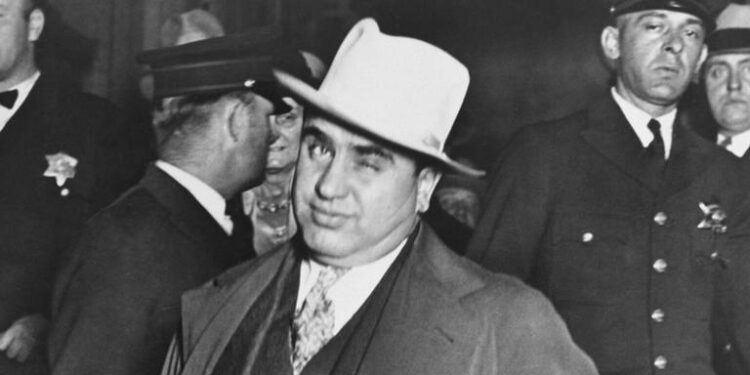Alphonse Gabriel Capone, better known as Al “Scarface” Capone, was one of the most infamous American gangsters of the 20th century. Born in 1899 to Italian immigrant parents in Brooklyn, New York, Capone’s life of crime began early when he joined street gangs as a teenager.
Capone’s criminal career took off after he moved to Chicago in 1919 at the invitation of Johnny Torrio, an established gangster. The implementation of Prohibition in 1920 provided a golden opportunity for organized crime, and Capone quickly rose through the ranks of the criminal underworld.
By 1925, Capone had taken control of Torrio’s criminal empire. He expanded the bootlegging business and used violence to eliminate rivals and consolidate power. Under Capone’s leadership, his organization grew to include gambling, prostitution, and protection rackets. At its peak, the “Chicago Outfit” was earning an estimated $100 million a year.
Capone’s flamboyant style and charisma made him a celebrity of sorts. He cultivated an image as a “modern-day Robin Hood,” opening soup kitchens during the Great Depression and portraying himself as a businessman providing services the public wanted. However, his brutal methods, including the infamous St. Valentine’s Day Massacre of 1929, eventually turned public opinion against him.
Despite his notoriety, law enforcement struggled to pin charges on Capone. Enter Frank Wilson, a forensic accountant with the IRS, who painstakingly built a case against Capone for tax evasion. This strategy of using tax laws to prosecute criminals when other charges wouldn’t stick became known as “the Al Capone method.”
In 1931, Capone was indicted for 22 counts of federal income-tax evasion. During the highly publicized trial, Capone’s attempts to bribe and intimidate jurors were thwarted. On October 17, 1931, he was found guilty on all counts and sentenced to 11 years in federal prison, along with heavy fines and back taxes.
Capone’s conviction marked the downfall of America’s most notorious gangster. He served most of his sentence in Alcatraz, where his mental and physical health deteriorated due to untreated syphilis. Released in 1939, Capone never regained his former power or influence. He died of cardiac arrest in 1947 at his Florida home, leaving behind a legacy as one of the most famous criminals in American history.
The saga of Al Capone serves as a cautionary tale about the rise and fall of criminal empires and highlights the innovative law enforcement tactics that finally brought down one of America’s most elusive gangsters.
newshub











Recent Comments